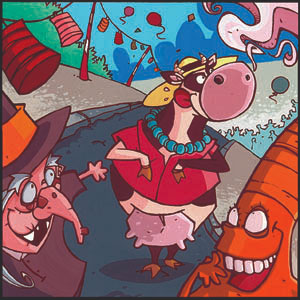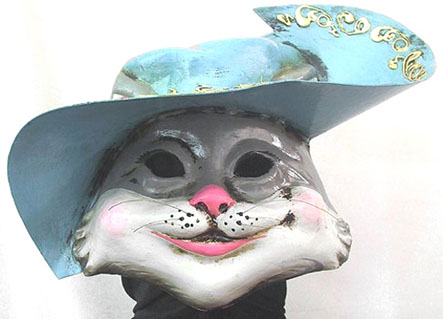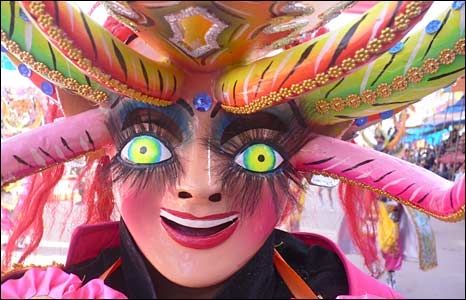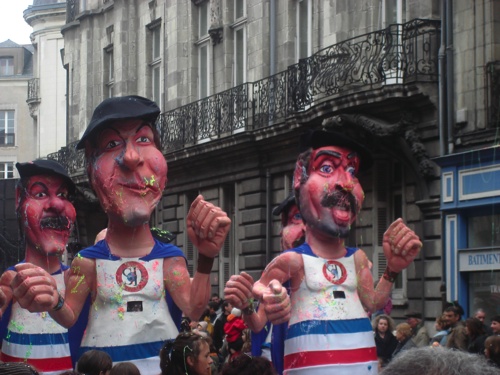Another name for carnival is "Mardi Gras". The French name "Mardi Gras" means "Fat Tuesday", from the custom of using all the fats in the home before Lent.
QU'EST-CE QUE LE CARNAVAL? / WHAT IS CARNIVAL?The day before the beginning of Lent is called Mardi Gras (Fat Tuesday) or Carnival. For Christians, Lent is the forty days that Jesus spent in the desert without anything to eat or drink. Lent ends on Easter Sunday.
Carnival is celebrated in February or March. The most famous carnivals are the ones in New Orleans in Louisiana, Nice in France and also, the most crazy of all, the one in Rio de Janeiro.
ORIGINES / HOW DID IT START?At the origin of the Carnival there were many old habits from France. For example, the French took a fat cow around the roads of Paris to tell people not to eat meat during Lent. The word "carnival" means in Latin "to take away eating meat". Some people believe the idea for carnival started even earlier with the ancient festivals of the Romans. Many years after it started in Europe carnival spread to America and many other countries.
 LES COULEURS DE MARDI-GRAS / MARDI-GRAS COLORS
LES COULEURS DE MARDI-GRAS / MARDI-GRAS COLORSMardi gras has three official colors:
- le violet / purple (justice)
- l'or / gold (power)
- le vert / green (faith)
LES TRADITIONS DE MARDI-GRAS / MARDI-GRAS TRADITIONSMardi gras is traditionally celebrated with a parade led by a captain, during which trinkets, or "throws," are tossed to the crowd. The parade is followed by a costume ball presided over by a king and queen.
 CARNAVAL EN FRANCE / CARNIVAL IN FRANCE
CARNAVAL EN FRANCE / CARNIVAL IN FRANCENice on the Cote d'Azur is the largest Carnaval in France.
Dunkerque (North of France) is the wildest and widest Carnaval season.
Nantes (West) is up and coming and may be 2nd largest Carnaval in France.
Paris has the most Carnavals, but none have recaptured the stature of the Carnaval du Paris of the early 20th century.
In 2008, Ploermel Carnaval [founded 1924] became the first Carnaval in France to host the FECC International Carnival City Congress. Ploermel in the Morbihan district of culturally distinct Brittany peninsula is famous as the City at the crossroad's to the Merlin's enchanted forest where the most powerful myths and legends of France still live on.
LE VOCABULAIRE DE MARDI-GRAS / MARDI-GRAS VOCABULARY- un bal masqué costume ball
- un bijou jewel
- le capitaine captain
- un char float
- un collier necklace
- un costume costume
- une couronne crown
- un défilé parade
- un déguisement disguise
- une effigie effigy
- un feu de joie bonfire
- un flambeau torch
- la foule crowd
- un mardi gras a person who really gets into celebrating Mardi gras
- le masque mask
- une perle bead
- la plume feather
- la reine queen
- le roi king
Sources:
http://www.internet-at-work.com/hos_mcgrane/holidays/arnaud.html
http://french.about.com/od/vocabulary/a/mardigras.htm
http://www.carnaval.com/france/











